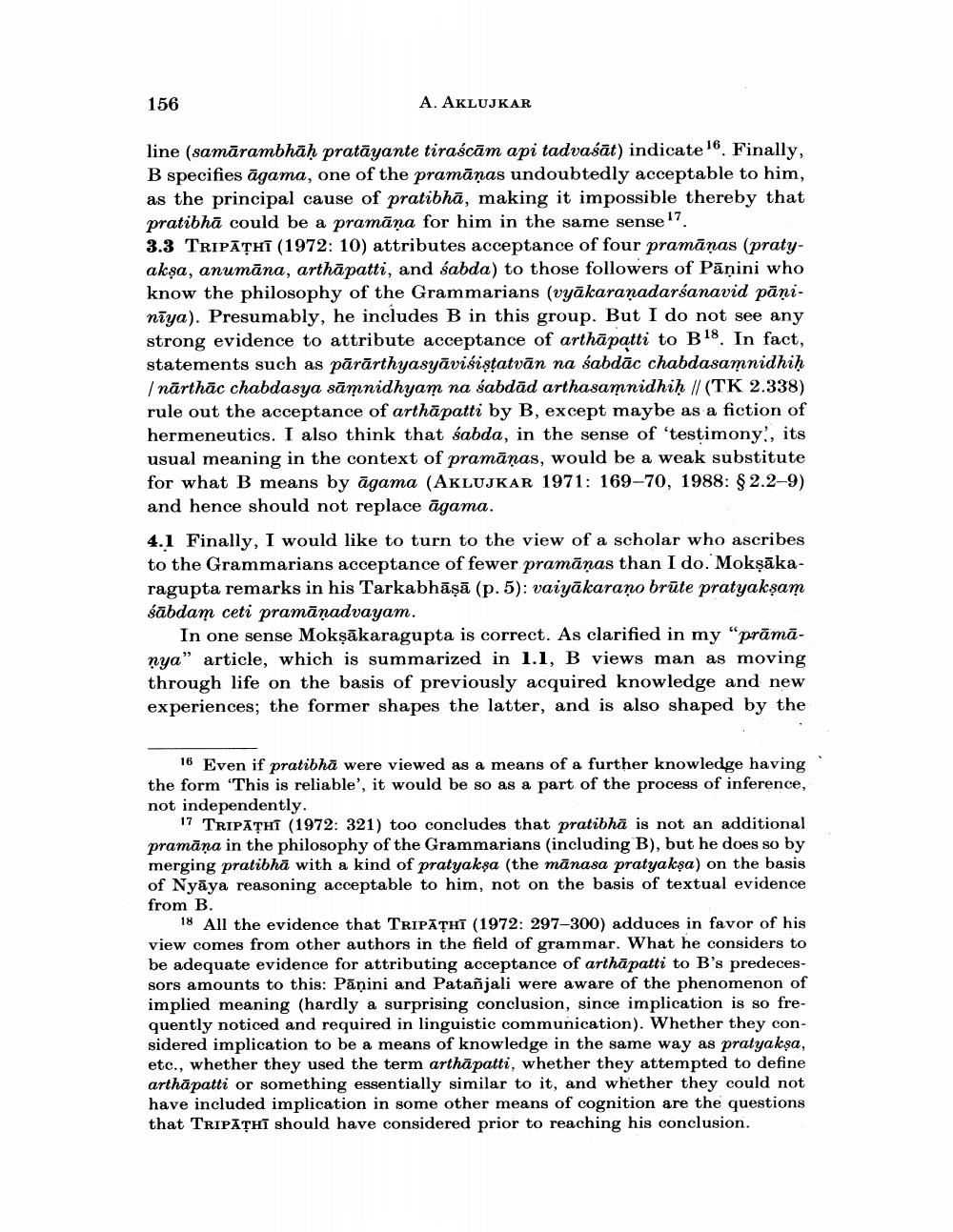Book Title: Number Of Pramanas According To Bhartrhari Author(s): Ashok Aklujkar Publisher: Ashok Aklujkar View full book textPage 6
________________ 156 A. AKLUJKAR line (samārambhāḥ pratāyante tiraścām api tadvaśāt) indicate 16. Finally, B specifies āgama, one of the pramāņas undoubtedly acceptable to him, as the principal cause of pratibhā, making it impossible thereby that pratibhā could be a pramāņa for him in the same sense 17. 3.3 TRIPĀȚHI (1972: 10) attributes acceptance of four pramānas (pratyakşa, anumāna, arthāpatti, and sabda) to those followers of Pāṇini who know the philosophy of the Grammarians (vyākaraṇadarśanavid pāņinīya). Presumably, he includes B in this group. But I do not see any strong evidence to attribute acceptance of arthāpatti to B18. In fact, statements such as pārārthyasyāvićiştatvān na sabdāc chabdasamnidhiḥ Inārthāc chabdasya sāmnidhyam na sabdād arthasamnidhiḥ // (TK 2.338) rule out the acceptance of arthāpatti by B, except maybe as a fiction of hermeneutics. I also think that śabda, in the sense of 'testimony , its usual meaning in the context of pramānas, would be a weak substitute for what B means by agama (AKLUJKAR 1971: 169-70, 1988: 2.2-9) and hence should not replace āgama. 4.1 Finally, I would like to turn to the view of a scholar who ascribes to the Grammarians acceptance of fewer pramānas than I do. Mokşākaragupta remarks in his Tarkabhāşā (p.5): vaiyākarano brūte pratyakşam sābdam ceti pramāṇadvayam. In one sense Mokşākaragupta is correct. As clarified in my "prāmānya” article, which is summarized in 1.1, B views man as moving through life on the basis of previously acquired knowledge and new experiences; the former shapes the latter, and is also shaped by the 16 Even if pratibhā were viewed as a means of a further knowledge having the form "This is reliable', it would be so as a part of the process of inference, not independently. 17 TRIPATHI (1972: 321) too concludes that pratibha is not an additional pramāna in the philosophy of the Grammarians (including B), but he does so by merging pratibha with a kind of pratyakşa (the mānasa pratyaksa) on the basis of Nyāya reasoning acceptable to him, not on the basis of textual evidence from B. 18 All the evidence that TRIPATHI (1972: 297-300) adduces in favor of his view comes from other authors in the field of grammar. What he considers to be adequate evidence for attributing acceptance of arthāpatti to B's predecessors amounts to this: Pānini and Patañjali were aware of the phenomenon of implied meaning (hardly a surprising conclusion, since implication is so frequently noticed and required in linguistic communication). Whether they considered implication to be a means of knowledge in the same way as pratyakşa, etc., whether they used the term arthāpatti, whether they attempted to define arthā patti or something essentially similar to it, and whether they could not have included implication in some other means of cognition are the questions that TRIPATHT should have considered prior to reaching his conclusionPage Navigation
1 ... 4 5 6 7 8
